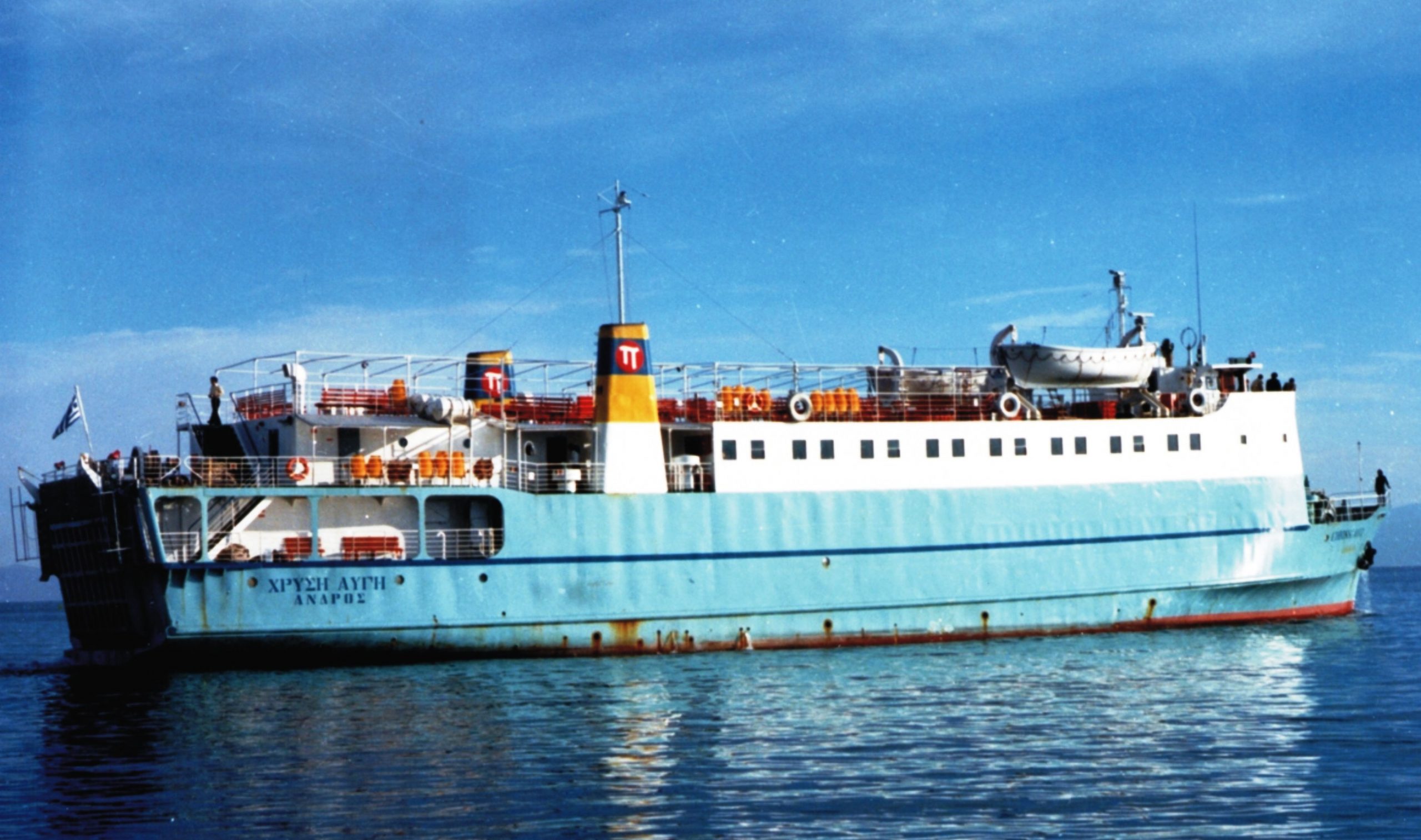
The wreck of a ship that sank 40 years ago in Cavo D’ Oro, taking with it 28 human lives, was brought to light by researcher Costas Thoktaridis and his team.
The ship in question is Chrysi Avgi (Golden Dawn), that had been purchased in 1976 by the company “Grammi Epirou EPE” belonging to Augustus Polemis and was traveling from Rafina to the Cyclades, as a passenger-car ferry.
Its discovery awakened memories but also mixed emotions among the relatives of the victims: “The fact of finding the sunken Chrysi Avgi is important, but our people who were lost with it will never return…” said Ms. K. Tsoumezi, wife of the master who was lost on that fateful day.
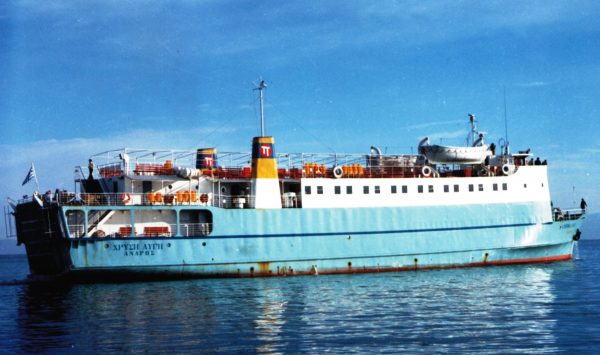
“Crysi Avgi” in Rafina. Photo by Valakis from the collection of G. Kovaiou
Ship history
It was Wednesday, February 23, 1983 at 16:06 when the “Chrysi Avgi” sailed from the port of Rafina bound for Andros and other islands of the Cyclades, carrying 5 trucks and 9 fuel tankers with a total weight of 298 tons.
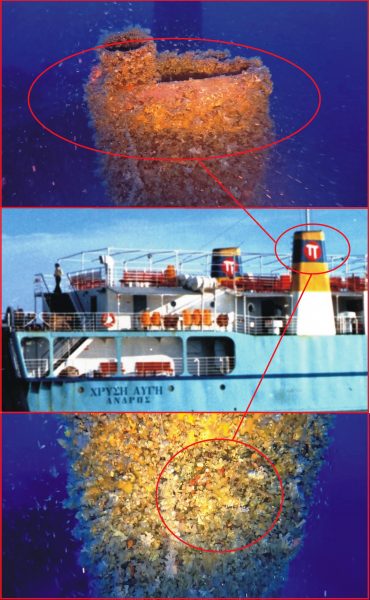
The characteristic smokestacks of the Chrysi Avgi shipwreck, which, despite the explosion and the fire that followed during the sinking of the ship 40 years ago, can still be seen today, bearing the signs of the ship’s owners
There were 21 people on board as crew, 16 truck drivers and 5 passengers, among them M. Lavda and her two children. That afternoon the weather was cold, raining and blowing strong winds.
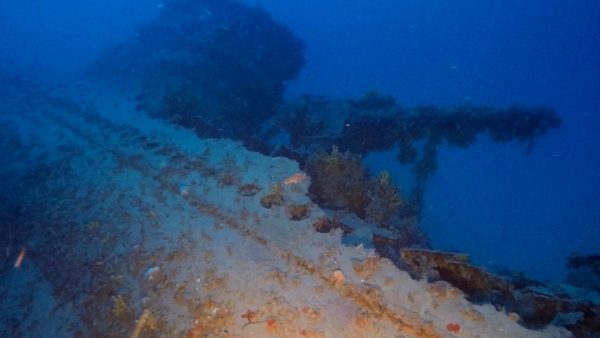
On the aft starboard side we see the catapult closed and secured despite the powerful explosion.
At 18:20 the ship, while sailing to Cavo D’ Oro, took a dangerous right list of 160 degrees. Capt. Antonis Gardelis, realizing the criticality of the situation, changed course to the port of Karystos and immediately after sent a distress signal on the radio , which was received by the coastal station of Lavrio.
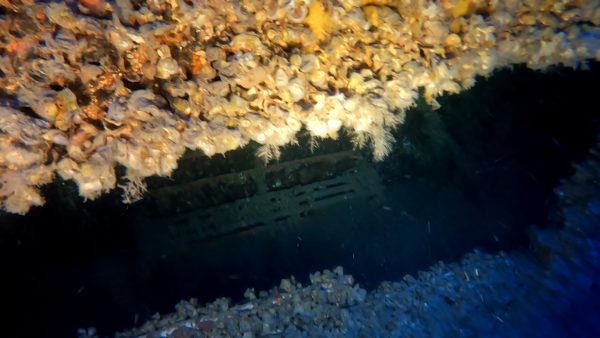
One of the two benches located behind and to the right of the outer corridor of the ship can be seen.
Sinking
About 15 minutes later an explosion rocked the “Golden Dawn” most likely due to a fuel leak from the tankers. A fire broke out on the ship. A second, even stronger explosion followed and the ship capsized. Then, part of the superstructure detached and the trucks in the garage ended up at the bottom.
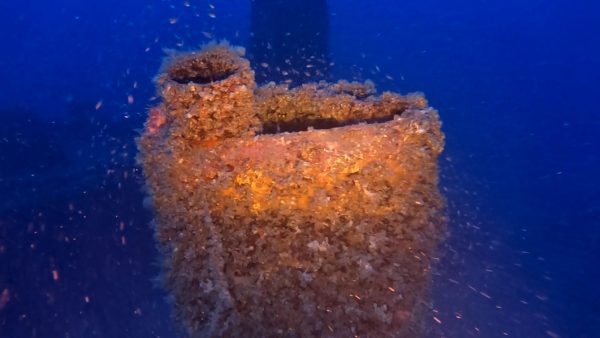
The right smokestack with the colors still visible today
In order to help with saving passengers and crew, the passenger/ferry “Chrysi Ammos III” from Rafina, the passenger/ferry “Kastriani Keas” from Karysto, the Russian oceanographic ship Yakov Gakkel which was in the area for hydrographic surveys, the Romanian “Boldaine”, the frigate “Lemnos”, the destroyer “Sphendoni” of the Navy and vessels sailing by, sped to the area.
An Air Force C130 aircraft was dropping flares to facilitate the search. Unfortunately, out of the total of 42 on board only 14 were rescued, 12 people by the Russian oceanographic ship, one person by the Romanian ship and 1 by the “hrysi Ammos III”. Among the 14 survivors were only three crew members…
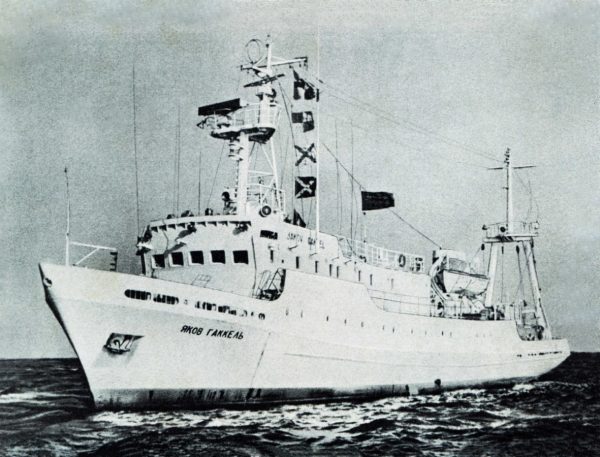
The unknown protagonist of the rescue is the Russian oceanographer Yakov Gakkel (Яков Гаккел) and its crew who managed to collect 12 survivors. The Yakov Gakkel was conducting hydrographic surveys in the area and immediately received the distress signal from the coastguard station of Lavrio, it was the first ship to rush to the area. It was built in Odessa in 1975 and then decommissioned as Ukrainian in 2010.
Meanwhile, the ship remained on the surface upside down and drifted due to currents for at least 3 hours until it was lost forever to the Aegean seabed…
Finding the wreck
Forty years after its tragic loss, the team of researcher Kostas Thoktaridis located the sunken Chrysi Avgi at a depth of 110 meters. As he notes, “the first images from the wreck are awe-inspiring. It is impressive that only part of the superstructure was detachedby the fire and explosions, while the rest of the ship remains intact on the seabed.”
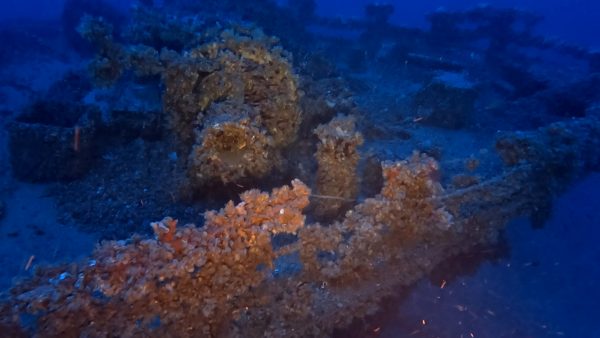
Starboard (right) side bow – winches
It is worth noting that in the past some of the trucks and part of the superstructure had been located, but not the wreck of the Chrysi Avgi, which is not located in the same spot.
The shipwreck on the seabed
After the explosions and overturning, the ship – according to the findings – during the sinking, having earlier been freed from the cargo of the trucks, returned due to the low center of gravity of the engines and tanks to an upright position and settled on the sandy bottom on its keel and with a right list of 8 degrees.
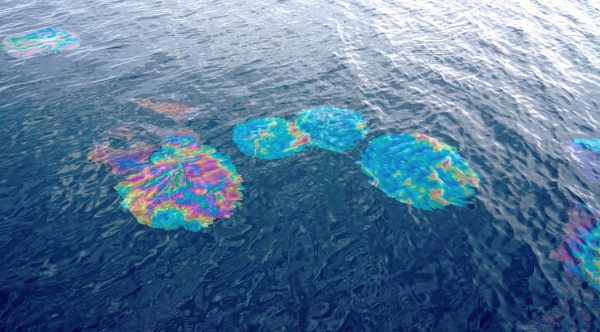
Although 40 years have passed since the sinking of the ship, a small fuel leak continues to this day.
The distinctive yellow-colored fog lights with the red-and-white logo of the ship-owning company, the letter P, still stand out. A special underwater remotely operated vehicle ROV (Remote Operated Vehicle) was used for the location and identification operation. The stern catapult is closed and secured, the anchors are in place in the ship’s holds, and sheets are seen shifting to starboard. On the wreck are fishing gear, such as the net next to the ladder that led to the upper aft deck.
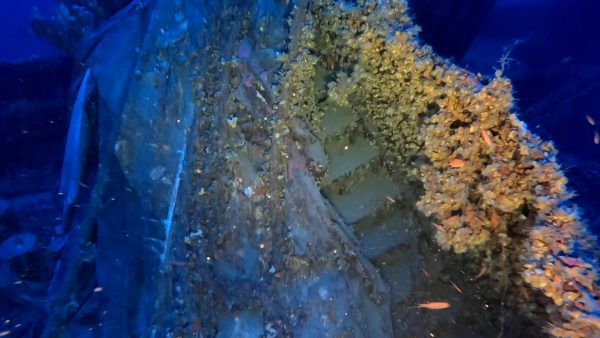
Stairway leading to the upper deck in the stern area
At the stern, you can also see the winch that was used to manage the lines when the ship was moored in port. On the aft right side you can clearly see the corridor which even today has the two characteristic benches. There is the manhole that led to the engine room half open…
Latest News

Cost of Living: Why Greece’s 3% Inflation Is Raising Alarm
Greece appears to be in a more difficult position when it comes to price hikes, just as we enter the era of Trump’s tariffs.

Fitch Ratings Upgrades the Four Greek Systemic Banks
NBG’s upgrade reflects the bank’s ongoing improvements in its credit profile, Fitch notes in its report, including strong profitability, a reduction in non-performing exposures (NPEs), and lower credit losses
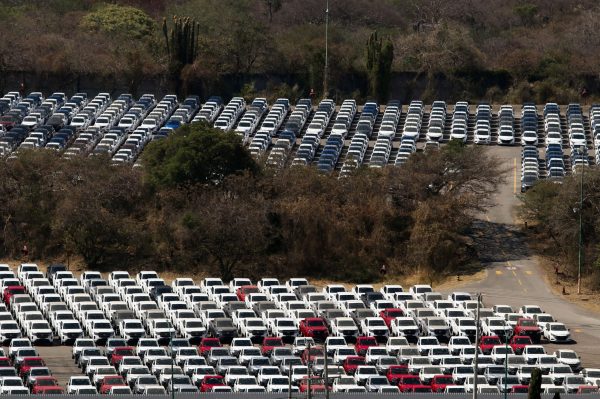
Trump to Announce Sweeping New Tariffs Wednesday, Global Retaliation Expected
With Trump's announcement just hours away, markets, businesses, and foreign governments are bracing for the fallout of one of the most aggressive shifts in U.S. trade policy in decades.

Inflation in Greece at 3.1% in March, Eurostat Reports
Average inflation in the eurozone settled at 2.2%, compared to 2.3% in February

Greece’s Unemployment Rate Drops to 8.6% in February
Despite the overall decline, unemployment remains higher among women and young people.

Jerry Kalogiratos Highlights Key Role of Energy Transition and Data Demand in LNG Outlook
Energy transition and the prospects of LNG were discussed at Capital Link’s 19th Annual International Maritime Forum, during a panel discussion with Jerry Kalogiratos (Capital Clean Energy Carriers Corp.)
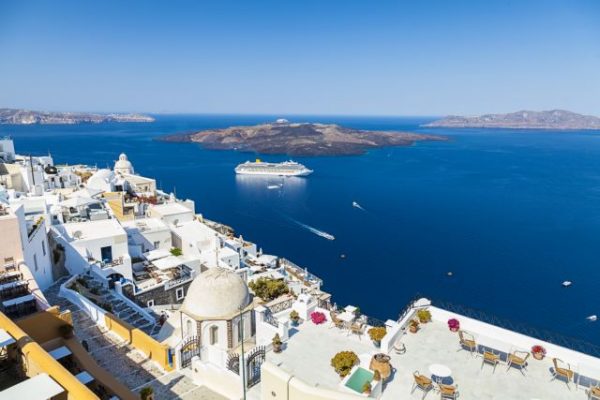
Santorini Safe and Ready for a Dynamic Tourism Season
Authenticity, cultural heritage, and genuine experiences at the center of Santorini's new promotional campaign
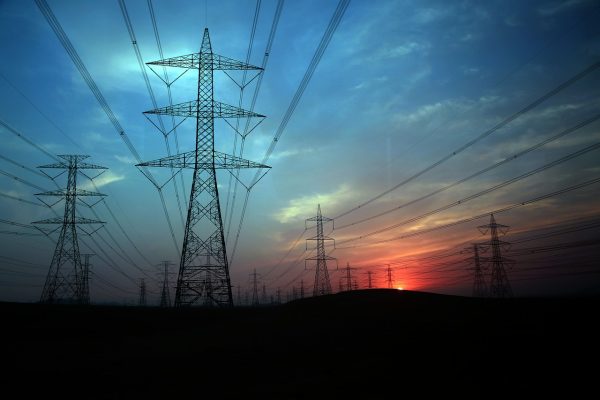
Electricity Bills: Greece Announces Reduced Tariffs Schedule
Greece will now offer lower electricity rates between 11:00-15:00 and 02:00-04:00
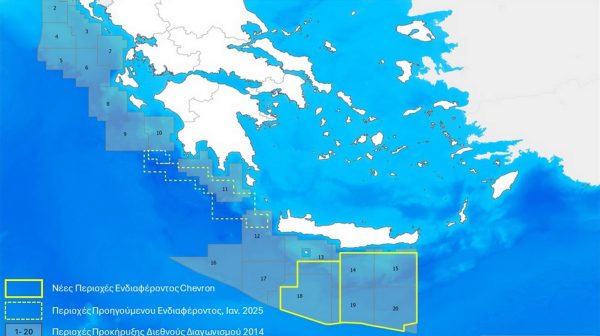
Chevron Confirms Eyeing Natural Gas Exploration South of Crete
Chevron recently declared its intent to explore a third area, south of the Peloponnese.

Evangelos Marinakis: A time of change from which shipping can benefit
Speaking at the 19th Annual Capital Link International Shipping Forum Evangelos Marinakis stressed the challenges that shipping faces today












![Τουρκία: Μεγάλες βλέψεις για παραγωγή ηλεκτρικών οχημάτων [γράφημα]](https://www.ot.gr/wp-content/uploads/2025/03/ot_turkish_autos-90x90.png)











![ΕΛΣΤΑΤ: Αυξήθηκε η οικοδομική δραστηριότητα κατά 15,6% το Δεκέμβριο [πίνακες]](https://www.ot.gr/wp-content/uploads/2025/03/DSC9655-2-1024x569-1-90x90.jpg)







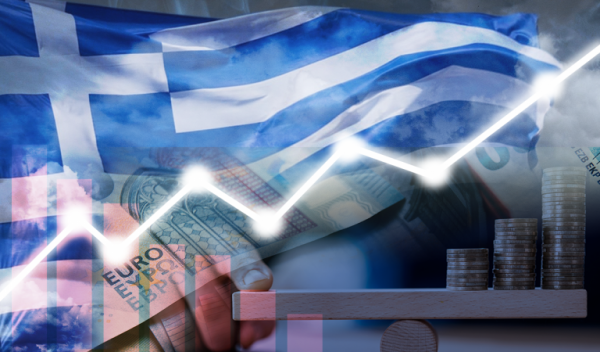
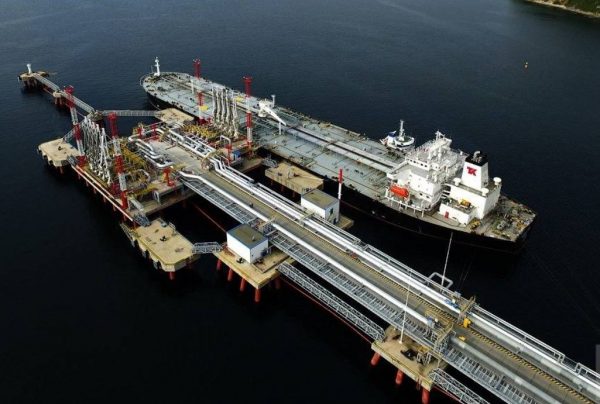




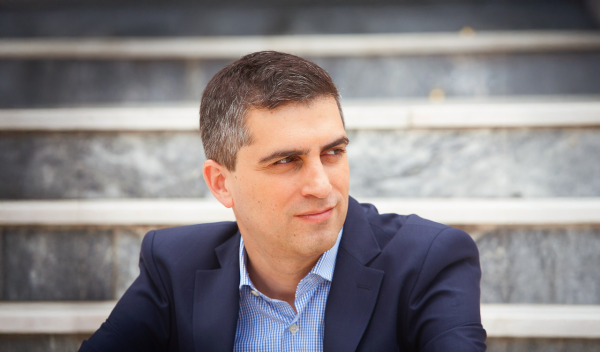


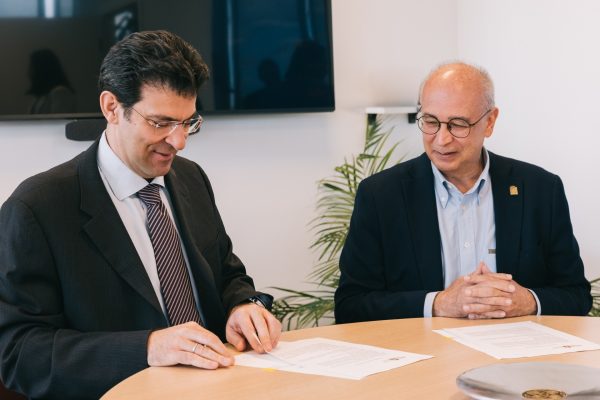
 Αριθμός Πιστοποίησης
Αριθμός Πιστοποίησης